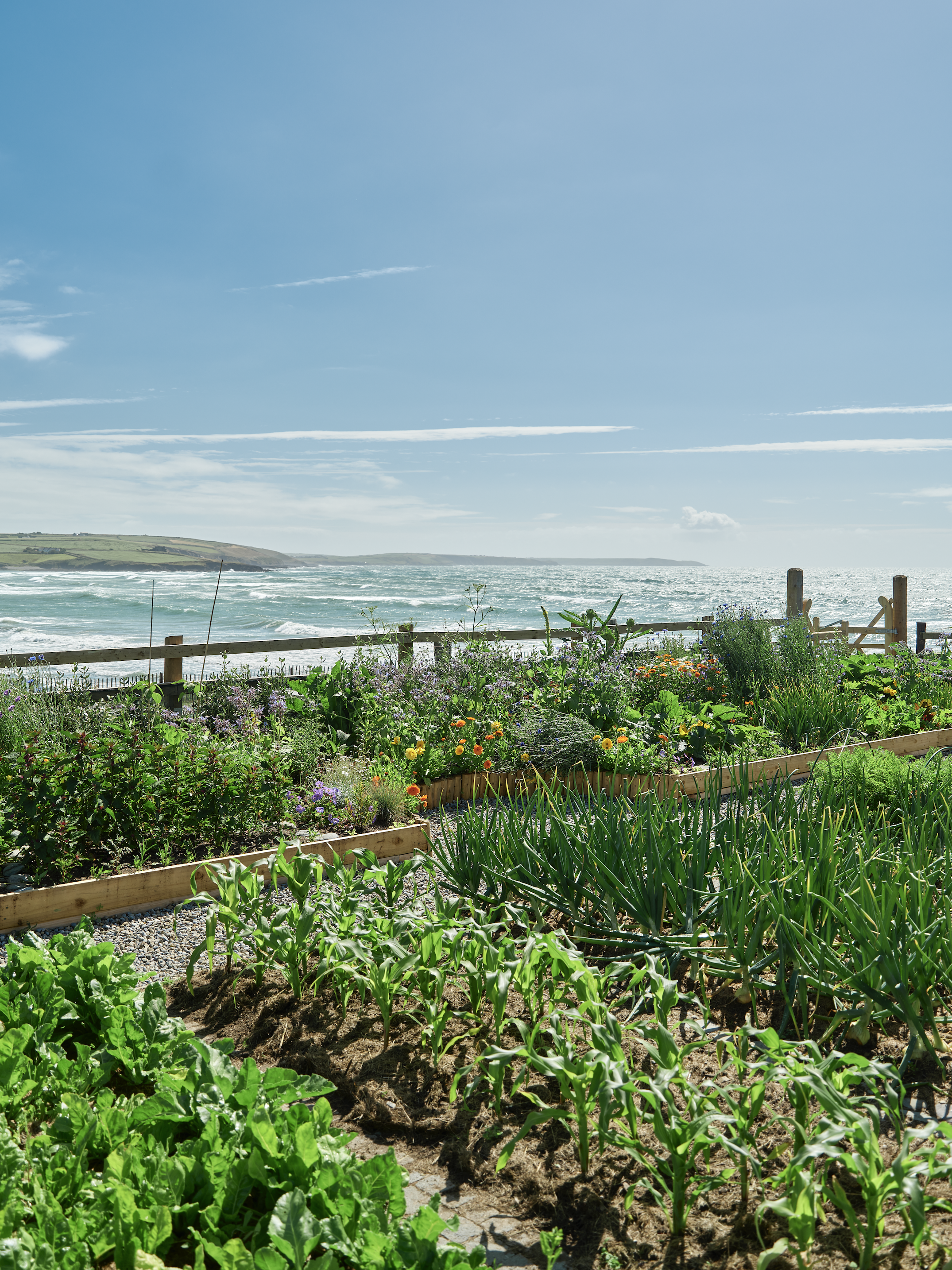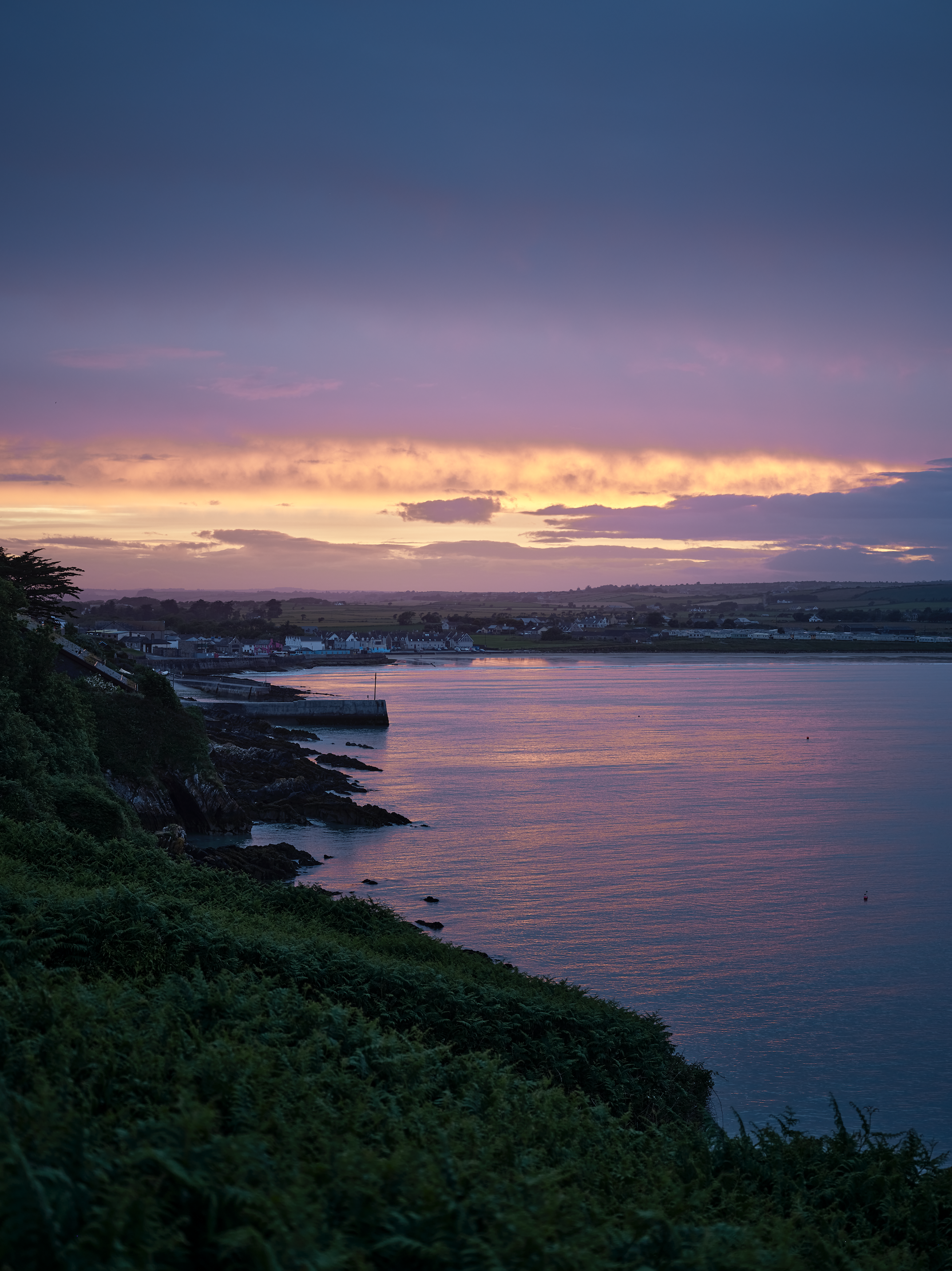Conversations With Friends
Words by Liz Schaffer & Photographs by Orlando Gili
Sharing a story from our Ireland magazine.
My first night in Belfast was a blur. Not only because we revelled in pubs and the weather gods put on a show, but because I realised - three-whiskeys-in as musicians let loose in Madden’s Bar - precisely how brilliant an Irish heart-to-heart can be. Chatting at the bar, or while perched at the end of tables, I was struck by the openness, pride and sense that the conversations you have here might just change the way you see the world. Failing that, they’ll at least introduce you to someone fabulous - a friend with a Sligo bathhouse perhaps?
While this was a lovely discovery, it also came as a relief. Having been told time and again that Ireland is a nation of storytellers, I’d decided to bring a photo-taking-friend along on a road trip, and keep our itinerary deliberately vague. Hotels were booked, and a few sites deemed unmissable, but I was keen to leave the majority of the route up to those we met along the way.
My plan kicked in the moment we checked in to the riot of genteel eccentricity that is The Harrison Chambers of Distinction, a 16-room boutique hotel with a vibrant bohemian heart. Found in a converted Victorian merchant’s residence, across the road from the Botanic Gardens, each spacious room boasts a unique design inspired by a beloved personality from Northern Ireland - think C.S. Lewis, Jonathan Swift and Hans Sloane. My suite (named for the latter) was bedecked with a bay window and clawfoot tub, flashes of velvet, ornate cornices and swoon-inducing vintage furnishings sourced from across the globe. The artfully curated interiors are the work of owner Melanie Harrison, who adores her city. Among her many recommendations were Books Paper Scissors (if you’re after something penned by a Belfast native, this is where you shop) and the brilliantly-titled Crown Liquor Saloon for the first of many libations.
Things became a touch more debauched at The Duke of York, where we caroused among flower pots and fairy lights, and The Spaniard, where we crossed paths with photographer Olin Brannigan, who has passed many rain-soaked nights capturing Ireland’s Megalithic monuments. Not only did he confirm that our geological respects must be paid to The Burren National Park, but that a seaweed bath was vital - and he knew just the person to speak to about that.
So, the next day we drove across Antrim, paused for brunch at Third Day Coffee (their French toast is worth planning a trip around), swooned over Fermanagh’s Florence Court House, and tumbled from the car at Kilcullen’s Seaweed Baths, where Olin’s friend Cain was waiting.
Cain Kilcullen’s family have run these baths overlooking Enniscrone Beach for four generations (it opened the year the Titanic sank), and the process hasn’t changed much over the decades. You begin in a vintage steam box, before soaking in a tub with fresh, hand-harvested seaweed, and end with a cold salt water shower. Packed with iodine, magnesium, zinc and omega, the seaweed was a tonic that soothed my road-weary body and left me more energised than I’d been for weeks.
Cain’s love for the coast began early. He begged the surfers at Easkey Beach to teach him as a child, and has surfed every day since. For him, on a good day, the waves off Ireland’s west coast are some of the world’s best; but as blue sky can be elusive and winter temperatures brutal, surfing is a ritual for the devoted. Noting my hesitance to dive in, Cain instead suggested we make the most of the summer light and drive to Downpatrick Head.
It’s hard to describe the thrill that comes with a seemingly endless summer evening. The warmth, the hues, the suspicion that the landscape is putting on this otherworldly show just for you, makes you wonder if some strange magic is at play. Indeed, walking over the headland’s spongy moss-and-broom mounds towards the Dún Briste sea stack - the sky candy-floss pink and the waves blending with the mellifluous call of gulls - I followed what I assumed was a stone path being slowly devoured by the earth. Turns out it was the remnants of the Éire 64 sign, which the community had quietly restored. Around 80 of these markers were carved across the coastline during the Second World War to let pilots know they were flying over neutral Ireland. In this part of the world, you literally stumble over history.
We spent the night at Ballina’s Ice House Hotel & Spa, which is perched above the salmon-rich River Moy, not far from the Sligo Way walking route. It began life as an ice store (in 1836), and while the antiques-adorned Heritage Rooms honour its past, the Riverside Suites are decorous, contemporary affairs. There’s an abundance of natural light, stonework inspired by the drama of the Wild Atlantic Way, beds that envelop you, and immense windows ideal for taking in uninterrupted views of the swan-studded water. And then there’s the Chill Spa - a sleek and restorative oasis if ever there was one. Having given myself the task of indulging in as many seaweed baths as possible, I sank into one of the spa’s outdoor tubs the following morning and set about soaking up those nutrients, sustained by tea, sorbet and the promise of breakfast as I watched the clouds dance by.
The next leg of our odyssey delivered us to West Cork, although a requisite hike through The Burren’s lunar-esque, limestone terrain saw us arrive at Dunmore House under cover of darkness. And while I felt at home the minute convivial co-owner Carol Barrett swept me up in a fireside conversation, there’s a lot to be said for allowing this family-run boutique hotel to reveal itself with the rising sun, when the panoramic view over Clonakilty Bay (visible from every bedroom) is at its most spectacular.
An early morning wander through the hotel’s rolling grounds revealed a wildflower paddock, private beach, beckoning hammocks, sculptures by Moss Gaynor and a picturesque kitchen garden dotted with contented chickens. Standing among the courgettes and flowering sweet peas, I felt myself getting a little lost in the seascape, and watched as bursts of sunlight transformed the waves from moody greys to dazzling teals. For Antonia, one of Dunmore’s kitchen gardeners, the water is magnificent. “If you turn up in a bad mood, it will absolutely ground you. Some days it’s like glass, other times it roars, but it is always hypnotising.” With a backdrop like this, it’s little wonder fare from the hotel’s Adrift Restaurant is so delicious - or that Dunmore’s palette, decor and extensive art collection are elegant odes to the sea.
On hearing that we were bound for West Cork, writer and editor Kristin Jensen (who founded Blasta Books, which publishes quarterly cookbooks, and Scoop, an Irish food magazine) introduced us to Sally Barnes, the force of nature behind Woodcock Smokery. Sally is a pioneer, renowned for helping to bring Ireland’s artisan food traditions to the fore. She has smoke-cured fish by hand for four decades, her journey beginning when her then-husband came home from a weekend of rod fishing with five trout, each weighing more than four pounds. “I was furious,” says Sally, “because we had two small babies, and I thought who is going to eat these? I haven’t got a freezer, I haven’t got any way of conserving them! But being cross started a conversation about what people did before - how they conserved fish in times of plenty.”
Through experimentation, Sally found her way to salt-curing and smoke-drying, going on to supply the community and develop a unique recipe. Today, she runs courses with Max Jones of Up There The Last - a traditional food conservation project that aims to maintain food heritage and knowledge through immersive experiences. We’d met Max earlier that day beside Castletownshend pier as fishermen readied their rowboats, and he’d arrived bearing snacks: homemade brown bread slathered in butter and topped with Sally’s salmon, which he described as “truly wild”.
For Max, food is everything. He believes in the importance of connection, recipe- sharing and experimentation. “With the Woodcock Smokery workshops, we’re essentially teaching people what wild means,” he explains. “Real food, the best stuff, if you chase it back to source, is about the lives of people, the makers. They’ve got all of their sustainability absolutely dialled in because they’re using traditional techniques that pre-date industry ... The best way for knowledge like that to not disappear is to open Sally’s brain to everybody.”
A little later, tucking into a makeshift picnic outside Kinsale’s tangerine-hued Bulman Bar as kids leapt from the sea wall, I thought about Max’s words. Everyone we’d met had been so willing to share their insights, and to champion the projects, people and places that meant something to them. In fact, we’d found out about our lunch spot after striking up a conversation in an Innishannon pub with a dairy farmer who swims around the bay’s island every morning.
There’s something special about Irish waters, they have a way of beguiling you. Perhaps the fact they’re prone to being so terrifying wild means that when things are calm, you can’t look away - or think about anything but the scene before you. I sensed this outside The Bulman, and again in Ardmore while wandering the town’s Cliff Walk, found near the swish, art-centric Cliff House Hotel (one of the few planned stops on our trip). This is not a lengthy route, but it’s one that will fire up your imagination as you pass crumbling cathedrals, shipwrecks and Napoleonic lookouts being slowly consumed by the land and sea. When you finally return to Ardmore’s harbour and spy intrepid swimmers wading out into the millpond blue, you find that everything has slowed; your breath, thoughts, even the late summer sun seems to be taking its time to dip below the horizon, leaving a melange of lilac and magenta in its wake.
I could have stayed by that seascape forever. But alas, even the most glorious odysseys must draw to a close. Our last hedonistic evening unfolded on the streets of Dublin, both of us aware that road trips that begin with serendipitous pub hopping, should also end that way.
So, that’s how we found ourselves in The Cobblestone, ‘a drinking pub with a music problem’. This traditional Irish music bar is overseen by Tom Mulligan, who comes from a long line of musicians. His songwriter son was behind the bar, and his daughters both play the fiddle - one with her left hand and one with her right. Surrounded by chatter and song, I couldn’t remember who first told us about Tom. All I knew, watching him play his recorder by The Cobblestone window, was that I rarely felt this content. While the music certainly made spirits soar, my cheer was clearly the culmination of a week on the Irish road, and the warmth, beauty and chance encounters that came with it.
Leaving Ireland is hard. The landscapes inspire, history follows you everywhere, and if you strike up a conversation, it’s likely you’ll embark on a journey that’s far more wondrous than the one you had planned. Ireland is a place that will have you talking - and it’s best to go along for the ride.
For more stories from the island of Ireland, check out the magazine.















